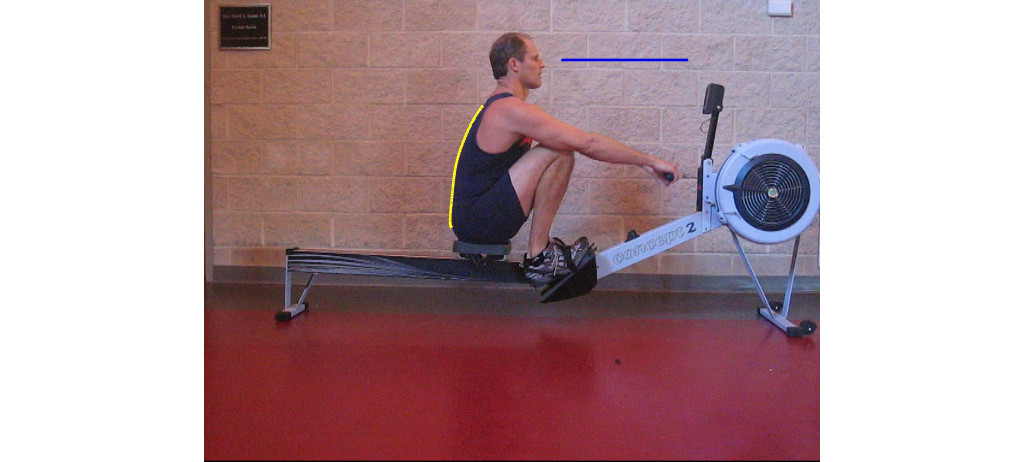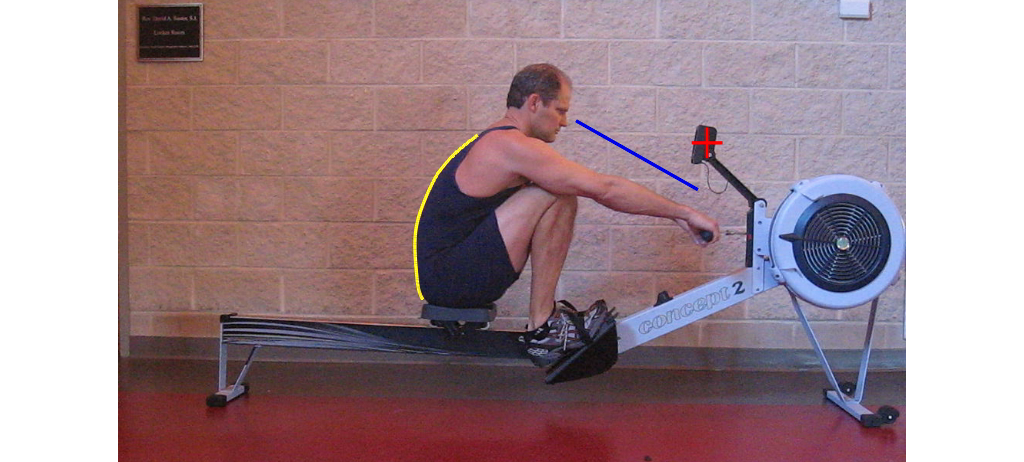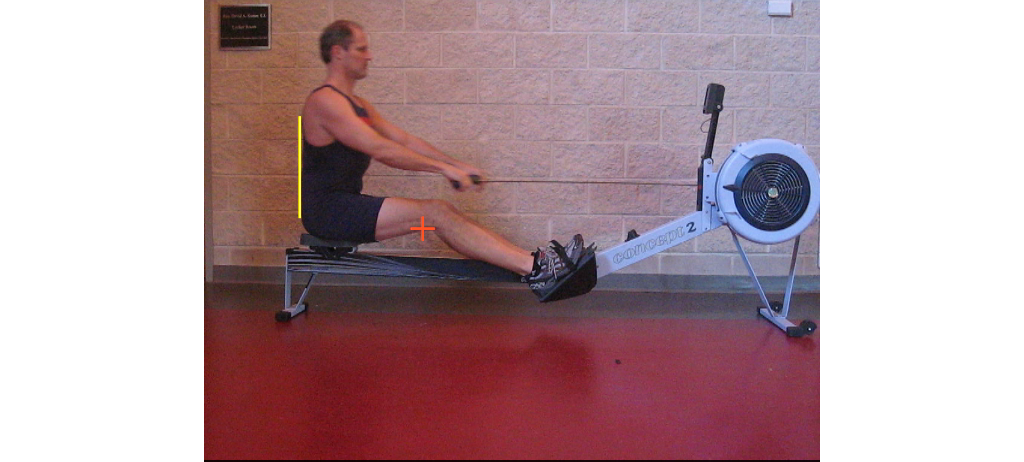Body Balance Evaluations- 2010 San Diego Crew Classic
February 16, 2010
Coach Kaehler will be in San Diego, CA for the Crew Classic on March 26th, 27th and 28th of 2010. For those interested he will be available to run you through his Body Balance Structural Evaluation process during that weekend. Understanding your specific imbalances is key to developing maximum strength and power in all endurance sports, including rowing. Once your specific imbalances are identified Coach Kaehler will immediately you how to implement your specific corrective exercise program. You will also receive .pdf pictures and detailed text on how to perform each exercise which is a great reference tool to help you to implement this powerful corrective body balance process. The key to maximizing your power and strength and reduce your injury risk in rowing comes from proper body balance. This powerful process has helped hundreds of rowers, runners and cyclists return to their sport after their specific imbalances were identified and corrected. If you or someone you know has given up their favorite endurance sport because they could not tolerate the physical stresses of that activity, then they would certainly benefit from identifying and correcting their specific body balance issues. The Body Balance Structural Evaluation process takes about 75-90 minutes per individual so there will be a limited number of time slots available. Sign-up today to take advantage of this unique opportunity while Coach Kaehler is in southern California.
Go to the “Camps and Clinics” page to sign-up now!
March 26 – 28th, San Diego Crew Classic
February 16, 2010
Coach Kaehler will be in San Diego, CA for the Crew Classic on March 26th, 27th and 28th of 2010. For those interested he will be available to run you through his Body Balance Structural Evaluation process during that weekend. Understanding your specific imbalances is key to developing maximum strength and power in all endurance sports, including rowing. Once your specific imbalances are identified Coach Kaehler will immediately show you how to implement your specific corrective exercise program. You will also receive .pdf pictures and detailed text on how to perform each exercise, this is a great reference tool which will help you to implement this corrective body balance process. The key to maximizing your power and strength and reduce your injury risk in rowing comes from proper body balance. This powerful process has helped hundreds of rowers, runners and cyclists return to their sport after their specific imbalances were identified and corrected. If you or someone you know has given up their favorite endurance sport because they could not tolerate the physical stresses of that activity, then they would certainly benefit from identifying and correcting their specific body balance issues. The Body Balance Structural Evaluation process takes about 75-90 minutes per individual so there will be a limited number of time slots available. Sign-up today to take advantage of this unique opportunity while Coach Kaehler is in southern California.
**This evaluation process is fairly easy on the body, and will have no effect on your racing or training performance.
Friday March 26th, 2010 (location to be determined and will either be at a hotel in San Diego or one of the boathouses)
2:00pm – 3:30 pm – booked
3:30pm – 5:00pm – available
5:00pm – 7:00pm – available
7:00pm – 8:30pm – available
Saturday – March 27tharch 28th , and Sunday M
Will schedule according to requested times and location.
After making your purchase, please contact Coach Kaehler to reserve your preferred time.
San Diego Crew Classic – Body Balance Evaluations
February 9, 2010
Coach Kaehler will be in San Diego for the Crew Classic from March 26 thru March 28, 2010 and will be providing time slots for his body balance structural evaluation. This unique evaluation will help you understand your specific body imbalances that not only limit your strength and power in rowing, but are often are the source of chronic discomfort related to training. This process sets your body on the right pathway so your training is both powerful and painless, the way it should be. If you have failed with traditional medical treatment this may be the answer you have been looking for. Coach Kaehler had run hundreds on rowers through this body balance evaluation process with great client success. What are you waiting for, sign-up today!!
Please contact Coach Kaehler about time slots.
Rowing News – Fitness Column February 2010
February 9, 2010
Written by Coach Kaehler:
Are you stuck on the ergometer now that winter has set in? For those of you who must train indoors this winter, now is a great time to work on proper body posture while cranking out the meters on the erg. Rowing with proper body posture, or biomechanics, through the winter training season can help to reinforce good habits now, and better prepare you for a solid on- the-water season once the ice melts. One big advantage of using an ergometer is that it allows you to get instant feedback on your body posture and technique during the rowing stroke. An easy way to quickly assess your posture and rowing technique is to place mirrors in front and alongside the rowing machine, or by using a video camera to record your rowing stroke. Either method allows you to get quick feedback and make the necessary adjustments to improve your rowing posture and technique. Although ideal rowing posture varies among coaches, most would agree on keeping your spine in an extended, upright position (Figure 1, yellow line) rather than in a C- shape (Figure 2, yellow line), at the catch, during the drive, and on the recovery of the rowing stroke. Your spine connects the power from your legs through the arms onto the handle, much like a transmission in an automobile. The spine, when remaining stable, acts as a harness to transmit all of the force from the legs during the first half of the drive. During the second half of the drive, the spine begins to generate its own force along with the arms to help complete a powerful stroke. A solid rowing posture improves your ability to maintain effective body suspension on the drive, leading to a smoother and more rhythmic recovery. Improving your rowing posture requires specific attention to several areas, including proper head position, hamstring flexibility and solid trunk strength.
Head and neck position are important because their position helps dictate what the rest of the spine will do. At the catch, it is ideal for your head to be looking forward or slightly up (Figure 2, blue line) putting your neck in an extended position, helping to promote a straight spine as described above. When your head is looking down towards the foot stretchers or your legs your neck tends to be in a flexed position (Figure 2, head position) which may lead to a C shapes spine. (Figure 2, yellow line)
In addition to proper head and neck alignment, your hamstring flexibility is an important factor in helping promote effective rowing posture. Lack of mobility in the hamstrings often leads to more rounding in the low back on the recovery and at the catch. Your aim is to get your body over on the recovery with your low and mid spine in the straightest position possible. Hamstring mobility can be improved right on the erg by pivoting the body over at the recovery with the low and mid spine kept in a firm extended position (Figure 3, yellow line), until tension is felt in the back of the knees (Figure 3, red marker).
While flexibility and head posture are both important so is good trunk strength which is necessary to be able to maintain this solid spine posture. One easy method for developing better trunk strength while maintaining a straight back position is to do one or both of the following drills “legs only” and “legs and arms only ”. Keeping the trunk stable requires good strength especially when these two drills are done with moderate power. Again, using mirrors here makes it easy for you to assess your trunk position quickly to ensure you are doing these strength drills correctly.
As the ice begins to melt and you are getting back in the boat, your new rowing posture will not only improve your power and performance, it will make all those meters on the erg even more valuable when you finally get your blade in the water. Looking forward to that spring thaw!!
Figure 1
Figure 2
Figure 3
Water Guidelines for Training Recovery
February 5, 2010
Water Guidelines
Fluid replacement in and around meals:
Proper hydration is an important element of recovery from training. Male endurance athletes can lose up to 10 liters of fluid per day, while women lose slightly less. Daily individual losses vary depending on the training climate, as well as the length and intensity of training. Water levels can be balanced through the water you drink, as well as the food you eat. To optimize your recovery, you must consider when to replace your fluids, as well as how the fluids are delivered to your digestive system. Here are some basic guidelines for fluid replacement in and around your meals.
Timing
Recovery from training is optimized when the body can devote most of its energy into rebuilding itself. Avoid drinking liquids with meals as it requires the body to secrete additional digestive enzymes which slows digestion and reduces its efficiency.
When recovering from training, avoid drinking water 30 minutes prior to eating, and for about 2 hours after a carbohydrate meal, and up to 3 hours after a heavy protein meal.
How to rehydrate
When eating protein meals, include plenty of raw vegetables (salads) as they are made mostly of water. With carbohydrate meals, include plenty of raw fruit as they too are mainly made of water. The water in fruit and vegetables does not dilute digestive enzymes, so it is the most efficient delivery of water back into the body when eating.
One method of fluid replacement that I prefer is eating fresh melons as a snack in between meals. Melons digest very quickly (about 30 minutes) and they are about 90% water. The digestion of the melons slows the delivery of water into the bloodstream, which is easier on the kidneys.
Overall, ensure you drink enough water between meals, and increase your consumption of raw fruit and vegetables.
Proper and balanced hydration is a critical factor in optimizing your training and racing.



